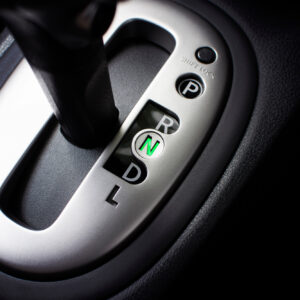If you’re wondering what part of the car is the chassis, it’s the supporting structure at the bottom. It holds parts together and keeps them safe and secure. It also has a huge impact on a car’s capabilities.
What’s a Car Chassis and What Does It Do?
The chassis is the frame at the bottom of the vehicle that supports all its weight. It includes the following parts:
- The frame or body – provides support to the powertrain, suspension, and steering components
- The suspension system – keeps the vehicle moving smoothly when driving on rough roads or terrain
- The braking system – reduces speed and stops the vehicle as needed
- The wheels and tires – provide traction for braking, cornering, and accelerating
Is the Car Chassis the Same as the Body?

It depends on the vehicle. In older units, the chassis and the body are separate, but more modern models combine them.
The earliest motor vehicles evolved from horse-drawn carriages. A modified carriage holds their powertrain and engine. That changed around the 1930s when all-steel-body-enclosed bodies became more common. The bodies rely on a frame to support the chassis components.
Many modern vehicles combine the chassis and the body, creating a unibody. This structure reinforces the vehicle and streamlines the manufacturing process.
What Does the Chassis Number Refer to?
The chassis number is the same as your vehicle identification number or VIN. It’s like your ride’s thumbprint. Every VIN is unique, and you can use it to check the vehicle’s history.
You can find the 17-character number on your driver’s side door or dashboard. It’s also recorded on the vehicle’s registration certificate.
What Are the Types of Chassis?
Vehicle chassis comes in four different types: backbone, ladder frame, monocoque, and tubular.
Backbone Chassis
The backbone chassis offers excellent support for off-road driving in mind. It has a rectangular cross-section tube that connects the front and rear suspension. The tube also surrounds the driveshaft.
Manufacturing this frame is costly, making vehicles with this type generally more expensive than vehicles with other chassis types.
Ladder Frame Chassis
The ladder frame chassis gets its name from its ladder-like structure. It’s one of the oldest types. It consists of two heavy beams supported by two shorter beams.
This type is tough thanks to its tensile strength, which is the maximum stress something can bear before breaking when stretched or pulled.
The ladder frame chassis is heavier than other types, so it’s not ideal for performance cars. It also has low torsional stiffness, meaning it has poorer handling and isn’t as responsive to driver input.

Monocoque Chassis
The monocoque chassis gets its name from the French word for “single shell.” It combines the frame and the chassis to create one protective structure. Many modern vehicles have a monocoque chassis because they’re easy to mass-produce.
The monocoque chassis has the best torsional rigidity out of all the types. Its cage-like frame keeps parts safe and secure while making it easy to access them for repairs and replacements when needed.
However, this type is on the heavier side. Mass production is almost necessary because producing it in small quantities is incredibly costly.
Tubular Chassis
The tubular chassis is common in performance and race cars because they offer tremendous protection without sacrificing weight.
It offers excellent weight and rigidity ratio, making it superior to other chassis types that have the same weight. Its low weight and better rigidity support racing better than any other type.
The tubular chassis is rarely found on commercial vehicles because it’s complex and difficult to make. Mass production is not an option. It’s also not suitable for passenger cars and everyday vehicles. On top of that, its unique design makes entering and exiting the vehicle a hassle.
What is the Chassis of a Car Made Of?
Chassis construction is a careful balance between weight and durability. It must be durable and strong enough to support various components without being too heavy for the vehicle to move. It’s why most chassis are made of steel or aluminum.
Steel
Due to its strength, durability, and shock absorbance, steel is used in many car components, including the chassis. It’s resistant to rust, relatively cheap, and easy to shape.
Other vehicle parts that are usually steel or have parts made of this metal include the engine, wheels, and frame.
Aluminum
Aluminum is another common car component material because of its low weight and resistance to corrosion. It also has high strength, high thermal conductivity, and low density.
Aluminum in the chassis helps reduce the vehicle’s overall weight, as it’s lighter than steel. Other parts with this metal typically include the wheels, brackets, and brake components.
Any information provided on this Website is for informational purposes only and is not intended to replace consultation with a professional mechanic. The accuracy and timeliness of the information may change from the time of publication.






























